How to remove stains?

If you are faced with the problem of stains on clothes, upholstery, shoes and other things, then first of all, you need to establish their origin and composition, because it depends on how to remove stains. The easiest way, at first glance, is to use dry cleaning services, because there the masters know what to do and how, and you personally will not need any efforts. But sometimes it’s faster and more efficient to get rid of troubles at home, because you will agree that it’s quite difficult to deliver a chair or sofa with stained upholstery to a special service.
to contents ↑Important! It is much easier to remove a fresh stain, therefore, the problem must be solved immediately and immediately. Many fresh stains easily disappear after washing with soap or other detergents.
What are the spots?
All spots can be conditionally divided into the following groups:
- Soluble in water. These are pollution from: foods containing sugar, from wood glue, from some water-soluble dyes, water-soluble salts, etc.
- Soluble in organic solvents (gasoline, alcohol, etc.). This type of pollution includes stains from grease, oil paints, engine oil, cream, resin, varnish, wax, parquet mastic, shoe polish, etc.
- Insoluble in water and organic solvents. These are pollution from liquid paints, tannins, oxide of salts and metals, protein substances, from blood, urine, mold, pus, water-insoluble natural and artificial paints, etc.
What you need to know about removing stains from clothes?
Each type of stain requires its own special treatment, however, some types of contaminants, for example, from coffee, wine, fruit juice and others, should be removed not only with water-soluble stains, but also with products designed to remove grease stains and insoluble stains.
Before removing any contamination with the product, it is necessary to check its effect on the fabric and color of the material. To do this, test the tool in an inconspicuous area, for example, a seam, under a belt or inside a pocket.
Important! Using too concentrated solutions is not recommended. It is more advisable to repeat the treatment with a weak solution, but several times, alternating with washing it.
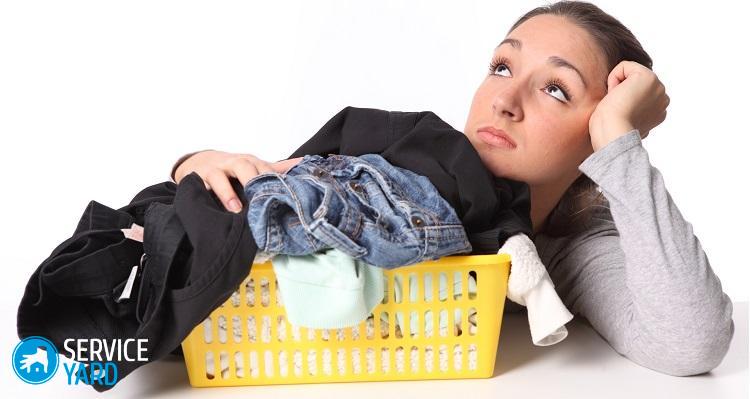
Determine the nature of the origin of the spot and the type of fabric
An important condition for the effective removal of contaminants is the determination of their origin. The material on which the stain formed also plays an important role.
Important! If the type of fabric is unknown, then cut a small piece from a hidden place of clothing and examine it for the action of stain remover.
In order to nevertheless be able to establish the nature of the origin of the pollution, we offer several methods for recognizing spots by their appearance:
- Fat spots do not have a pronounced border. Contours of contamination are usually blurred or appear in the form of rays distributed in all directions. Fresh fatty contaminants are always darker than the material on which they formed. The older the grease stain - the brighter it is, and the old impurities, penetrating deep into the material, even appear on the reverse side of it. Easily soluble fat spots include pollution from vegetable oils: sunflower, olive, cream, wax, pork fat, etc.Hardly soluble fat contaminants include: stains from varnish, oil paint, tar, etc.
- Stains that do not contain fat (from fresh fruits, tea, wine, beer, fruit juice, etc.) have sharp boundaries. Contamination contours are darker than the spots themselves. Color can be from yellowish to brown.
- Stains containing both fatty and non-fatty substances are the most common. This group includes pollution from soup, sauce, milk, blood, coffee with milk, street dust, etc. The edges of the spots, depending on the fat content, are less or more outlined. This type of contamination is usually retained on the surface of the material and only the fats entering them penetrate deeper.
- Oxidized spots. This type of pollution includes stains from berries, fruits, mold, wine, cosmetics, coffee, tea, etc., which usually oxidize after a while. Depending on age, the spots have different edges, and the color is yellow, red, and some brown. This shade appears on old spots, as a result of the formation of oxygen and other new substances under the influence of light. Such contaminants are the most difficult to remove.
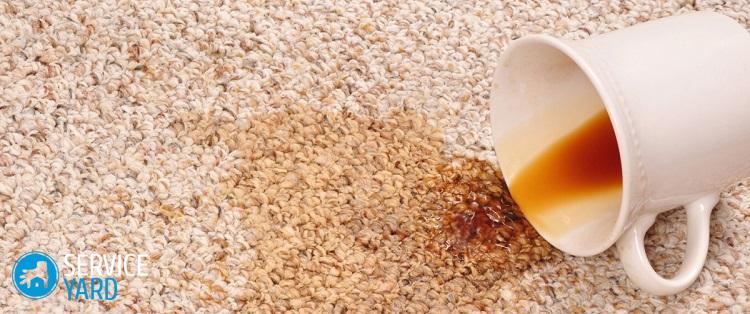
General tips for removing stains from clothing
To remove stains from the fabric does not become an insoluble problem for you, first of all, take yourself into service such rules:
- Stain removal begins with cleaning the product from dust: the thing is knocked out and then processed - first it is cleaned with a dry and then with a wet brush.
- The next stage is washing the product with water, first cold and then hot. If the stain is fresh, then use a warm soapy solution: moisten a cloth or toothbrush with a solution and wipe the stain, then rinse it with clean water, dry and iron.
Important! To avoid streaks and smudges, place a plank covered with several layers of clean white fabric on the inside of the stain.
- On small spots, apply the solution with a pipette or wooden stick. Wipe large dirt from the edges to the middle. Use a brush, hard brush, cloth, or cotton for cleaning.
- The correct tactic is to remove the stain from the inside out by placing a sheet of blotting paper or paper napkins under the fabric.
- The effect of stains, which is formed when the pollutants are removed around contaminants under the influence of chemicals, can be avoided if the fabric around the stains is moistened with water or sprinkled with talcum powder, starch.
- The best way to remove contaminants of unknown origin is ammonia and salt diluted in water.
Important! Using a particular solvent to remove stains from clothing, remember:
- Acids and alcohols destroy some paints.
- Alkali and alkaline preparations should not be used for woolen things and natural silk products.
- Acetone and acetic acid destroy tissue from acetate silk.
- Chloric lime is harmful to cotton and linen.
- Use alkalis and bleaching agents to clean only white fabrics.
- On nylon, stains cannot be removed with vinegar.
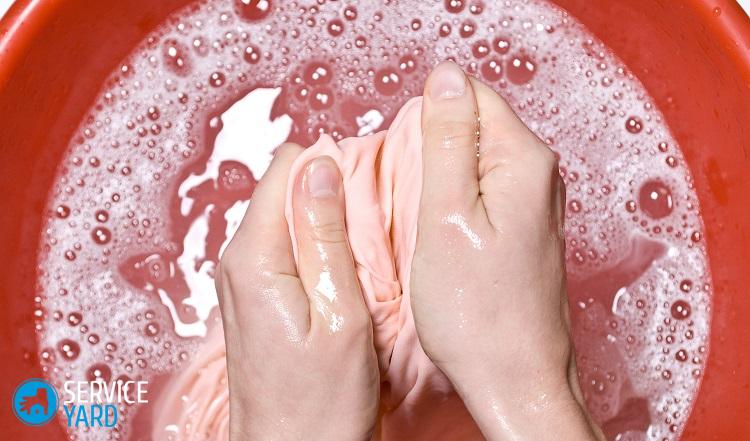
How to remove old spots?
If you failed to keep track of the state of things in time, you will have to solve the problem in fact. In this case, our tips on how to remove old stains from clothes will definitely come in handy.
Fat spots:
- Old oil paint stains are easier to remove if the soil is soaked in turpentine, and then treated with an appropriate preparation.
- To remove old grease, first use gasoline and then soap.
- Remove fresh greasy and oily contamination from light tissues with chalk powder (talcum powder): leave the product for 2-4 hours, and then shake it off. Repeat if necessary.
- Fat stains can be removed by rubbing gruel from potato flour, pre-dried over a fire and mixed with gasoline. Leave the flour for 20-25 minutes, after which carefully knock out the clothes and brush them.
- Remove grease from velvet with the warm crumb of a white roll.
- Sprinkle greasy dirt with talc (or chalk), cover with blotting paper and iron with a non-hot iron.
- Wipe the greasy spots on the outer collar with a cotton swab moistened with the following solution: Mix 5 g of table salt with 25 g of 10% ammonia.
- Wipe off any stains on the fabric made of wool with dry fine sand. Moisten the contamination with warm water and cover it with a small layer of sand, and then wipe it with a stiff brush or cloth. After processing, steam off the product.
- The old greasy stain can be deduced as follows: add a teaspoon of ammonia and a half-teaspoon of gasoline to half a glass of pure alcohol. Soak the stain with the mixture and let dry on the fabric.
- Stains from sprats, vegetable oil and canned oil are easily removed with kerosene. Wipe the dirt with a swab dipped in the product, and then wash the product in warm water and soap.
- Remove the stain from fish oil with water mixed with vinegar.
- Sprinkle fatty “troubles” on products made of dense synthetic materials with potato starch, and then rub with a damp towel. When the starch has dried, brush it. Repeat if necessary.
- On velvet, remove grease from dirt as follows: fill the linen bag with clean, dry, fine and warm sand. Tap the bag on the dirt until it disappears. If this does not help, moisten the contamination with gasoline and treat it again with a sandbag.
Important! Fat stains can be removed with the following solvents: turpentine, gasoline and commercially available liquid stain removers, which are a mixture of various types of solvents. However, handle these products carefully, as they are flammable and easily volatilized.
Use solvents in a well-ventilated area and away from open flames. Store in a container with a tight-fitting stopper.
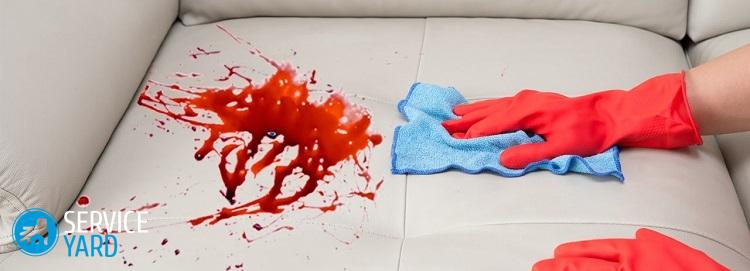
Stains from milk, ice cream and eggs
Egg stains need to be removed in a timely manner, since the proteins that make up the product turn into insoluble compounds over time. They are extremely difficult to remove from the tissue, therefore:
- Remove fresh egg stains with water and ammonia.
- Remove any old egg contaminants with glycerol or a mixture of glycerol and ammonia. Glycerin is heated to 35-40 C and wipe it with dirt with a brush. Then leave the item for 15-20 minutes, after processing - wash clothes.
- Stains from milk and other protein-containing products must be washed off immediately with warm (not hot) water. If the dirt on the light cloth is too large, immediately immerse the product in warm water with soap and rinse.
- If the fabric is colored, then use the mixture: 2 tbsp. l glycerin for 2 tbsp. l water. Add a few drops of ammonia to the solution. Moisten a mixture of dirt and place the workpiece between two layers of white cotton, and then iron it.
- Treat colored wool products heated to 35 ° C with glycerin. Put the product on the contaminated area for 10 minutes, and then wash it off with soap and water and rinse the product in warm and cold water.
Chocolate, coffee, tea
Traces of the above products contain fat, dye, protein and tannins, so use the following recipes to remove stains of this origin:
- It is enough to wipe chocolate pollution with a solution of ammonia. You can wash away stains from chocolate and heavily salted water.
- Old chocolate stains on white things remove hydrogen peroxide. Soak the cloth for 10-15 minutes. After processing, rinse the product in cold water.
- Remove coffee and strong tea stains with a brush dipped in warm water, then rinse the product thoroughly in a warm soapy solution using the following composition: half a teaspoon soda ash or 1 tsp.ammonia per 1 liter of water. After processing, rinse the product twice in warm, and a third time in cold water, slightly acidified with vinegar.
- Remove contamination from chocolate, coffee and tea on light fabrics with heated glycerin (up to 35 C). Lubricate the stained area with glycerin and rinse the treated area with warm water after 15-20 minutes.
- For silk fabrics, use the following mixture: 20 parts glycerol, 1 part 10% ammonia, 20 parts water. Treat the stain with this mixture and then rinse with warm water.
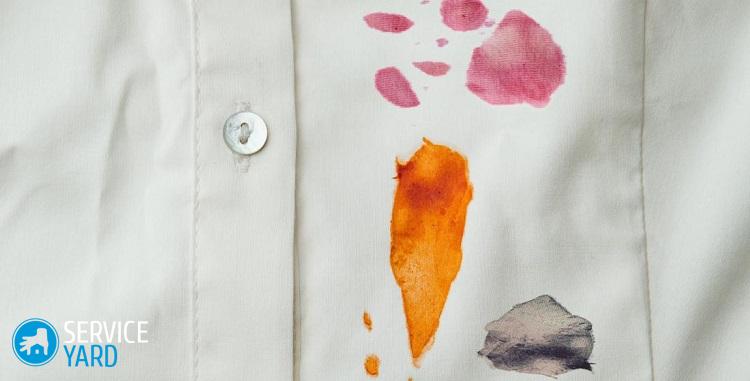
Fruits
If the stains are fresh, then they are easily removed with hot water and laundry soap. Remove problem spots using the following formulations:
- A mixture of glycerin and vodka in equal parts.
- Vinegar or lemon juice in equal proportions with vodka or meth. Use the product in this way: hold the cloth over a container of boiling water, and then wipe it with vinegar or lemon juice diluted in half with vodka or methylated spirits. After treatment, wipe the area with a swab moistened with a solution of ammonia with water.
- Remove contamination from fruits and vegetables in jersey with gruel from detergent powder or with the following mixture: gasoline and pharmacy glycerin (without perfume additives) in equal proportions.
- Wash fruit stains with slightly warmed denatured alcohol or vodka.
Red wine and berries
Contamination from red wine and berries can be removed with the means described for removing stains from fruits. In addition, you can use the following compounds:
- On non-ferrous products, remove stains with a mixture of glycerin and raw egg yolk (1: 1). Spread the stain with the mixture and leave it for several hours, then rinse with warm water.
- Fresh stains from red wine and berries should be removed with damp table salt, and after a while, rinse the area with hot water.
- Berry and wine stains from white products can be removed with hydrogen peroxide (1 teaspoon of the product per 0.5 tbsp of water). After cleaning, rinse the fabric with cold water.
Important! Remove fresh stains from wine, fruits and berries with plain hot water. Pull a cloth over any dishes and pour a small stream of boiling water from the kettle until the dirt is completely removed.
Blood
Fresh blood stains are easily removed by rinsing them first with cold water and then with a warm soapy solution.
Important! Soak a dirty product for several hours in cold water before main washing.
To remove old troubles, use the following recipes:
- Wipe off the dirt first with diluted ammonia (1 tsp. Funds in a glass of water), and then clean with a solution of borax (1 tsp. On 1 tbsp of water). After processing, rinse the item with warm water.
- Remove stains from fine silk products with starch. Coat the contamination surface with a product and let it dry, then shake off the starch and wash the product in the usual way.
- Remove old blood stains as follows: soak the product in a solution of sodium chloride (1 tablespoon per 1 liter of cold water), then wipe the cloth in warm water with laundry soap or laundry detergent.
Important! The salt solution also removes other protein contaminants well, for example, handkerchiefs are washed much easier in salted water with a small concentration. Salt must be used in small quantities, because otherwise the protein will curl up and it will be difficult to remove it.
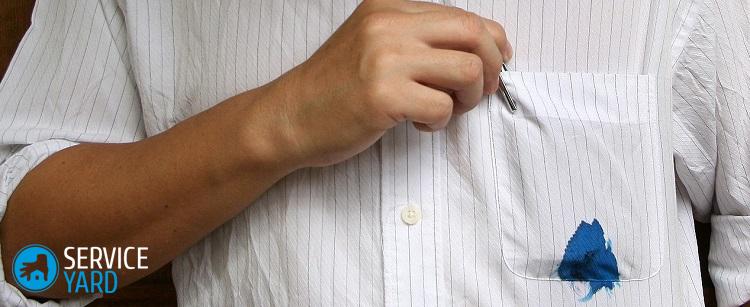
Sweat
Sweat stains contain inorganic salts (sulfates, phosphates, sodium chloride, etc.), organic acids, fat, urea, cholesterol and other substances. These impurities damage the fibers of natural silk and wool, and also decompose the dyes of the fabric.
To remove such stains from clothing, use the following tips:
- Sweat stains will be removed if ammonia is added to the water during washing (1 tsp. Per 1 liter of water).
- On wool products, remove contamination with a cloth dampened with a strong salt solution. If spots are noticeable, then wipe them with alcohol.
- From a silk lining of this kind of pollution are removed with a mixture of ammonia and methylated spirits taken in equal amounts.
- Clean collars with gasoline soap by mixing it with the same amount of ammonia. Rub the mixture into heavily contaminated areas, then rinse with warm water and rinse in warm water, acidified with vinegar.
Important! For all types of fabrics, the following mixture is suitable to remove sweat stains: table salt, borax and ammonia dissolved in one teaspoon in a glass of water. Treat the area with the product, and then rinse with water.
Urine
Urine is also considered difficult enough to remove contamination. In addition, it is necessary to derive not only the trace itself, but also remove the specific smell. For this reason, such means are suitable in this case:
- Moisten traces of urine with a strong solution of table salt, and then rinse the area with water.
- On white tissues, remove stains with a solution of citric acid (1 part of the product per 10 parts of water), on colored fabrics - with a solution of vinegar (1 part of vinegar in 5 parts of water.). Dampen the contamination with a solution, and rinse with water after an hour.
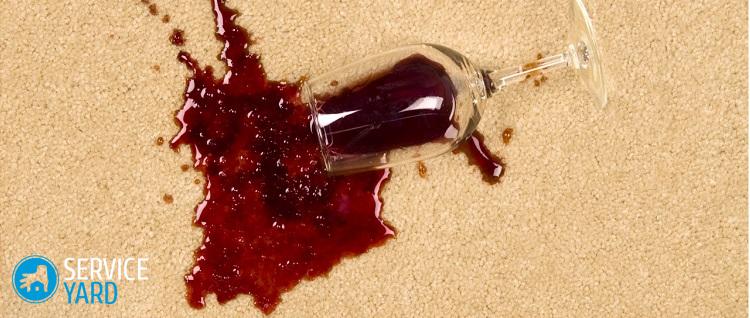
Ink
Ink is one of the most frequent troubles of those who work daily in the office and deal with papers. Often a similar incident with the presence of blots from a paste from a pen on clothes is presented by children. Therefore, literally everyone should know about how to remove ink stains. Such methods will help to cope with a similar task:
- Remove fresh ink stains with warm milk: put the product for several hours in warm milk (if the stain is large, change the milk several times). After processing, wash clothes in warm, soapy water with a small amount of borax or ammonia.
- Ink pollution is removed with glycerin. Keep stained tissue in glycerin for at least an hour, then rinse the product in warm, slightly salted water. If traces remain after processing, then wipe them in warm, soapy water.
- From white tissues, remove stains with a mixture of hydrogen peroxide and ammonia (1 tsp. Funds for 1 tbsp. Of warm water). Dampen the cotton wool in the solution, attach to the stained area, and then rinse the fabric with warm water.
- Old ink stains on colored products fill with a mixture of turpentine and ammonia (1: 1). After removing the problem, wash and rinse the entire product.
- Clean silk fabrics as follows: apply mustard pulp to the dirt and leave for a day. After 24 hours, scrub the gruel and rinse the product in cold water.
- On leather items, clean the ink stains with salt. Cover the stain with a thick layer of wet salt and leave for 2 days. Then shake off the salt and wipe the product with a sponge or cloth moistened with turpentine. Finally, clean the skin to a shine.
- The ink stain is removed from the velvet by immersing the stained area in warm milk for 30 minutes. Change milk until the contamination disappears. The final touch in restoring such a fabric so that no prominent areas remain is to wash in warm soapy water.
Important! You can immediately remove any ink stain from any tissue if you sprinkle salt on the dirt and pour it with lemon juice. As soon as the stain disappears, rinse the fabric several times.
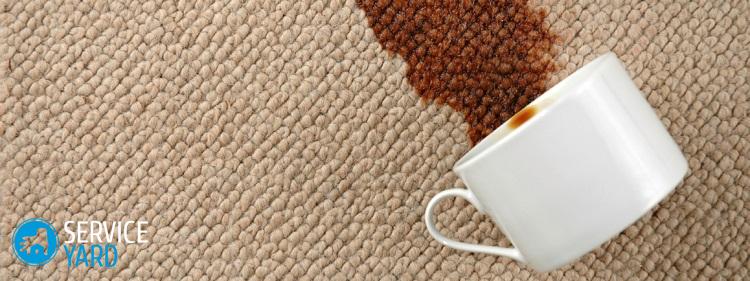
From hot iron
If you were careless and left a tan on the fabric with a hot iron, then use the following tips:
- On white cotton and linen fabrics, tan spots should be removed with hydrogen peroxide: one teaspoon of hydrogen peroxide, ⅓ tsp. ammonia for 1 tbsp. warm water. Wipe the cloth with a solution, then rinse with water.
- On dyed cotton, silk and wool fabrics, remove tan spots with denatured alcohol.
- If the stain is small, moisten it with onion juice and leave for several hours, and then wash the product again. If the stain is large, put gruel of grated onion on it.Leave the product for a while, and then soak the item in cold water and rinse well.
- Moisten a tan from the iron with water and sprinkle with a brown. Shake off the dried product and, if the stains have not disappeared, then moisten them with hydrogen peroxide, and then iron them.
Stock footage
It’s impossible to predict all the troubles that you may be exposed to. Therefore, classify your pollution by type and use our tips and tricks, depending on the material of the clothing. We hope that the information received from our article will be enough for you to remove any, even the most difficult to remove and complex pollution. Rest with pleasure, and do not think about spots!
- How to choose a vacuum cleaner taking into account the characteristics of the house and coatings?
- What to look for when choosing a water delivery
- How to quickly create comfort at home - tips for housewives
- How to choose the perfect TV - useful tips
- What to look for when choosing blinds
- What should be running shoes?
- What useful things can you buy in a hardware store
- Iphone 11 pro max review
- Than iPhone is better than Android smartphones



